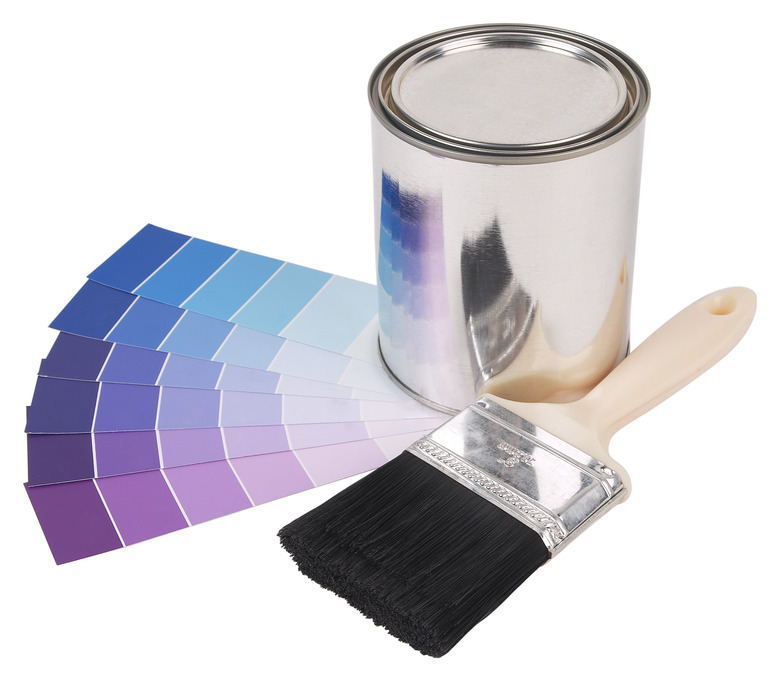Painting Over Chipped Gloss Paint
Things Needed
-
Cleaning detergent
-
Water
-
Bucket
-
Sponge
-
Tarp
-
Paint scraper
-
Sandpaper
-
Vacuum
-
Paint brush
-
Caulk
-
Primer
-
Paint
Chipped gloss paint is not as hard to remedy as most people think. The right preparation, tools and application can make the renovation process efficient and relatively stress-free. With so many products on the market, it's easy to get overwhelmed at the onset. Plan ahead, get organized and avoid the hassle of backtracking over mistakes. Most of all, don't be fooled by the misconception that you can only cover gloss paint with more gloss.
Preparation
Step 1
Decide which type of paint finish you would like to use for your project. High gloss is easiest to clean and works great in the kitchen or bathroom, and also where there is a lot of traffic or high moisture problems. The drawback is that it shows imperfections that aren't as noticeable with a less glossy paint.
Step 2
Make a list of the things you'll need and purchase the primer, paint and other supplies you will need to complete the renovation project. Stay organized to avoid making a second trip to the store once your project begins.
Step 3
Use a tarp to protect flooring or other household items. Move furniture to the center of the room if necessary. Take down curtains or drapes and cover with a sheet in an out-of-the-way location.
Step 4
Prepare the surface by cleaning it with a good detergent, water and sponge. Especially in the kitchen area, Dawn dish soap or something similar works great to cut through the grease residue left behind from cooking.
Step 5
Scrape the surface with a paint scraper to get rid of all the loose chips of paint. Use a consistent stroke with the blade as flat to the surface as possible to avoid gouging the wood.
Step 6
Use a coarse sandpaper to begin smoothing down the edges left after scraping. Change to a mid-grade sandpaper, and then finish the sanding process with fine sandpaper. Remove the dust with a vacuum as it accumulates. Wipe down the surface with a damp sponge before applying primer or paint.
Step 7
Use caulk to fill in any major dents or defects that you would like concealed before painting. If it's a deep hole you may have to apply it in layers. Let dry for the recommended time period listed on the tube, usually at least 24 hours.
Tip
Buy quality products for best results. Similarly, use quality tools to help achieve a more professional look. Test the surface to see if it has an oil or alkyd-based covering with either non-acetone based nail polish remover or an inexpensive test kit. Rub a small amount on the surface; if the surface strips clean it is alkyd-based. If it retains its shine, it is oil-based. Wet the sandpaper to help alleviate scratching the surface. This also minimizes dust.
Warning
Use a good sealer-primer to cover water stains and knot holes as they will bleed through water-based paint. Take extra precautions when there is a possibility of working with leaded paint. Make sure you have adequate ventilation and use a face mask to avoid breathing in tainted dust particles. Dispose of the dust and paint chips properly by sealing in a plastic bag and disposing as hazardous waste. If you're using a latex paint to cover, use an acrylic primer to prepare the surface for painting. Don't be fooled by the term "enamel" as this can also mean latex paint.
